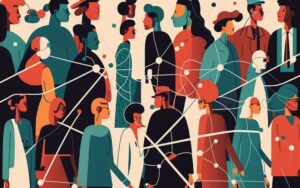
Nonprofit Quarterly asked Tim Delaney, president & CEO of the National Council of Nonprofits, to share insights about how nonprofits might utilize the new federal legislation relating to coronavirus to advance their missions. The Council of Nonprofits has been a central force in the larger coalition of groups lobbying to make sure nonprofits were not left out of the coronavirus response bills that Congress has been considering.
Because time is of the essence, this article skips pleasantries and goes straight to explaining how particular provisions in new coronavirus-related federal legislation may be beneficial to the work of most charitable nonprofits, sector-wide. Other provisions in the bill may help charitable nonprofits operating in certain subsectors (e.g., arts, education, hospitals), but this article does not address those.
Coronavirus Aid, Relief, and Economic Security Act (CARES Act)
Last night, the actual legislative language of the $2 trillion coronavirus relief bill finally emerged, and within hours the Senate passed the CARES Act bill unanimously. As of this writing, the House is expected to vote on Friday, and the president has not signed it, so it is not law yet. But given the overwhelming need to get protections and relief in place immediately, everyone expects that the CARES Act bill will be the law of the land within days.
Knowing that charitable nonprofits and foundations across the country are eager and anxious to learn what’s in the 880-page economic stimulus bill, my organization put together an analysis summarizing the outcomes on issues of interest to nonprofits sector-wide. We have posted that analysis as a PDF on our website, Initial Analysis of the Coronavirus Aid, Relief, and Economic Security Act (CARES Act) (S. 748). For your convenience, Nonprofit Quarterly has posted it below as well.
In addition to the analysis, nonprofit leaders may want to look at the data arranged by what they need. The following array shows some new ways that nonprofits may be eligible to access operational funds and avoid laying people off or closing their doors.
Emergency Support for Small to Midsized Nonprofits (500 Employees or Fewer)
The bill creates a new Emergency Small Business Loan program within the SBA 7(a) loan program. To be eligible, nonprofits or for-profits must have been in existence on March 1, 2020 or earlier and have 500 or fewer employees. An important provision: under this new program, loans are forgivable if the nonprofit or for-profit keeps staff on the payroll between March 1 and June 30. This, in essence, turns the loan into a general operating support grant. Forgivable loans of this type can be taken out for as much as $10 million and can be used to meet payroll and associated costs (including health insurance premiums), facilities costs, and debt service.
Further good news: A provision in earlier drafts that would have disqualified nonprofits that are eligible for Medicaid payments was removed from the bill.
Loan Support for Larger Entities with 500–10,000 Employees
The stimulus bill also calls for the creation of a loan and loan guarantee program via a new Industry Stabilization Fund specifically targeting “mid-size” organizations, defined as having between 500 and 10,000 employees.
This provision, unlike the emergency SBA loan program, does not provide loan forgiveness, but does mandate an interest rate of no higher than two percent and would not accrue interest or require repayments for the first six months. Nonprofits accepting the mid-size business loans must retain or rehire at least 90 percent of their staff at full compensation.
Support for Nonprofits of Any Size
The SBA currently has Economic Injury Disaster Loans (EIDL). The existing program provides loans of up to $2 million at an interest rate of 2.75 percent for nonprofits. These loans may be used to pay fixed debts, payroll, accounts payable and other bills that can’t be paid because of the disaster’s impact.
But we’re hearing reports from the field about conflicting messages from SBA offices.
The relief bill would change the EIDL to eliminate creditworthiness requirements and eligible nonprofits with 500 employees or fewer are supposed to be able to get checks for $10,000 within three days.
Benefits for Donors
As NPQ board member Gene Takagi details, the stimulus bill also contains a one-time, above-the-line deduction for cash contributions of up to $300 made to certain qualifying charities. All taxpayers would be eligible to take the deduction, even people who use the standard deduction. The incentive applies to contributions made in 2020 and would be claimed on tax forms next year. The new deduction would not apply to noncash gifts or to gifts contributed to donor advised funds.
For the eight percent of individual taxpayers who itemize their deductions, the bill would suspend for 2020 the normal limit on deductions for contributions, ordinarily 50 percent of adjusted gross income (AGI) or 60 percent for cash. For corporations, the limit on deductions for contributions, ordinarily 10 percent of AGI, is elevated to 25 percent for 2020. Food donations from corporations would be available to 25 percent, up from the current 15 percent cap.
Next Steps
Now that you’ve overlaid your facts on the new options above, take a step back and pause. Those are the general outlines of three new federal programs. There are no federal rules, regulations, guidelines, or application forms yet for most of these. No one has been trained on the federal side. Plus, some of the programs will require states to take certain actions. And our network of state associations of nonprofits, listening to and working with their members in various states are learning about different challenges with existing programs, let alone any new ones this bill would create.
As a network, our state association leaders are exchanging information across state lines. We’re seeing emerging challenges, comparing ideas of potential solutions, and troubleshooting.
Sign up for our free newsletters
Subscribe to NPQ's newsletters to have our top stories delivered directly to your inbox.
By signing up, you agree to our privacy policy and terms of use, and to receive messages from NPQ and our partners.
There can be no doubt that the mounting health and economic challenges ahead will require increasing policy work at all levels and branches of governments. The only way we can possibly succeed is to come together in this time of social distancing. None of us can do it alone. Neither as individuals nor as organizations. We need to unite to share information, insights, and inspiration.
If you’re a nonprofit and you’ve not yet joined the state association of nonprofits in your state, then do so today. They are the ones that can give you access to timely information in this rapidly changing environment and enable you to share your own experiences and skills. There is power in numbers.
And if you’re a grantmaker and you’ve not yet invested in the state association of nonprofits in your state, then do so to protect your grantees with the safety net of a network proactively working together solving problems rather than trying to stand alone. Step forward to provide nonprofits with a fighting chance by way providing meaningful resources to be true advocates. So many of the challenges ahead will be addressed in policy arenas, where the voices of nonprofits must be heard, for the common good.
How the COVID-19 Economic Stimulus Bill Would Affect Nonprofits
Coronavirus Aid, Relief, and Economic Security Act (CARES Act) (S. 748)
Congressional and Administration negotiators reached agreement on the Phase 3 COVID-19 economic stimulus bill early Wednesday morning and just released the legislative text this hour. The Senate and House hope to pass the $2 trillion legislation as quickly as possible.
What’s in the Bill for Nonprofits
The Coronavirus Aid, Relief, and Economic Security Act (CARES Act) (S. 748) provides significant funding for businesses, hospitals, schools, and social support programs, among many other things. Below are key nonprofit issues of sector-wide interest on which advocates have been most active. These are based on an initial analysis of the nearly 900-page bill. More details may become apparent with more thorough analysis.
Emergency Small Business Loans (emergency SBA 7(a) loans): Provides funding for special emergency loans of up to $10 million for eligible nonprofits and small businesses, permitting them to cover costs of payroll, operations, and debt service, and provides that the loans be forgiven in whole or in part under certain circumstances. Title I, Section 1102.
- General Eligibility: Available to entities that existed on March 1, 2020 and had paid employees.
- Nonprofit Eligibility: Available for charitable nonprofits with 500 or fewer employees (counting each individual – full time or part time and not FTEs). The final bill does not include a provision in earlier drafts that would have disqualified nonprofits that are eligible for payments under Title XIX of the Social Security Act (Medicaid).
- Loan Use: Loan funds could be used to make payroll and associated costs, including health insurance premiums, facilities costs, and debt service.
- Loan Forgiveness: Employers that maintain employment between March 1 and June 30 would be eligible to have their loans forgiven, essentially turning the loan into a grant. Section 1106.
Economic Injury Disaster Loans (EIDL): Eliminates creditworthiness requirements and appropriates an additional $10 billion to the EIDL program so that eligible nonprofits and other applicants can get checks for $10,000 within three days. Section 1110.
Charitable Giving Incentive: Includes a new above-the-line deduction (universal or non-itemizer deduction that applies to all taxpayers) for total charitable contributions of up to $300. The incentive applies to contributions made in 2020 and would be claimed on tax forms next year. Section 2204. The bill also lifts the existing cap on annual contributions for those who itemize, raising it from 60 percent of adjusted gross income to 100 percent. For corporations, the bill raises the annual limit from 10 percent to 25 percent. Food donations from corporations would be available to 25 percent, up from the current 15 percent cap. Section 2205.
Self-Funded Nonprofits and Unemployment: Only reimburses self-funded nonprofits for half of the costs of benefits provided to their laid-off employees. This is explained in a recent blog article. Section 2103.
Employee Retention Payroll Tax Credit: Creates a refundable payroll tax credit of up to $5,000 for each employee on the payroll when certain conditions are met. The entity had to be an ongoing concern at the beginning of 2020 and had seen a drop in revenue of at least 50 percent in the first quarter compared to the first quarter of 2019. The availability of the credit would continue each quarter until the organization’s revenue exceeds 80 percent of the same quarter in 2019. For tax-exempt organizations, the entity’s whole operations must be taken into account when determining the decline in revenues. Notably, employers receiving emergency SBA 7(a) loans would not be eligible for these credits. Section 2301.
Industry Stabilization Fund: Creates a loan and loan guarantee program for industries like airlines to keep them solvent through the crisis. It sets aside $425 billion for “eligible business” which is defined as “a United States business that has not otherwise received economic relief in the form of loans or loan guarantees provided under” the legislation. It is expected, but unclear, whether charitable nonprofits qualify under that definition for industry stabilization loans. Mid-sized businesses, including nonprofits, that have between 500 and 10,000 employees are expressly eligible for loans under this provision. Although there is no loan forgiveness provision in this section, the mid-size business loans would be charged an interest rate of no higher than two percent and would not accrue interest or require repayments for the first six months. Nonprofits accepting the mid-size business loans must retain at least 90 percent of their staff at full compensation. Section 4003.
Other Significant Provisions
Direct Payments to adults of $1,200 or less and $500 per child ($3,400 for a family of four) to be sent out in weeks. The amount of the payments phases out based on earnings of between $75,000 and $99,000 ($150,000 / $198,000 for couples).
Expanded Unemployment Insurance: Includes coverage for workers who are furloughed, gig workers, and freelancers. Increases payments by $600 per week for four months on top of what state unemployment programs pay.
Amendments to the New Paid Leave Mandates: Lowers the amounts that employers must pay for paid sick and family leave under the Families First Coronavirus Response Act* (enacted March 19) to the amounts covered by the refundable payroll tax credit – i.e., $511 per day for employee sick leave or $200 per day for family leave.
Significant Spending: The bill also calls for large infusions of cash to the following sectors:
- $150 billion for a state, tribal, and local Coronavirus Relief fund
- $130 billion for hospitals
- $30 billion for education
- $25 billion for transit systems
Legislative Summaries
- A section-by-section for unemployment insurance and tax policy
- A section-by-section for health policy
- A section-by-section for appropriations
- A section-by-section for banking policy
* See: Analysis of the Families First Coronavirus Response Act














